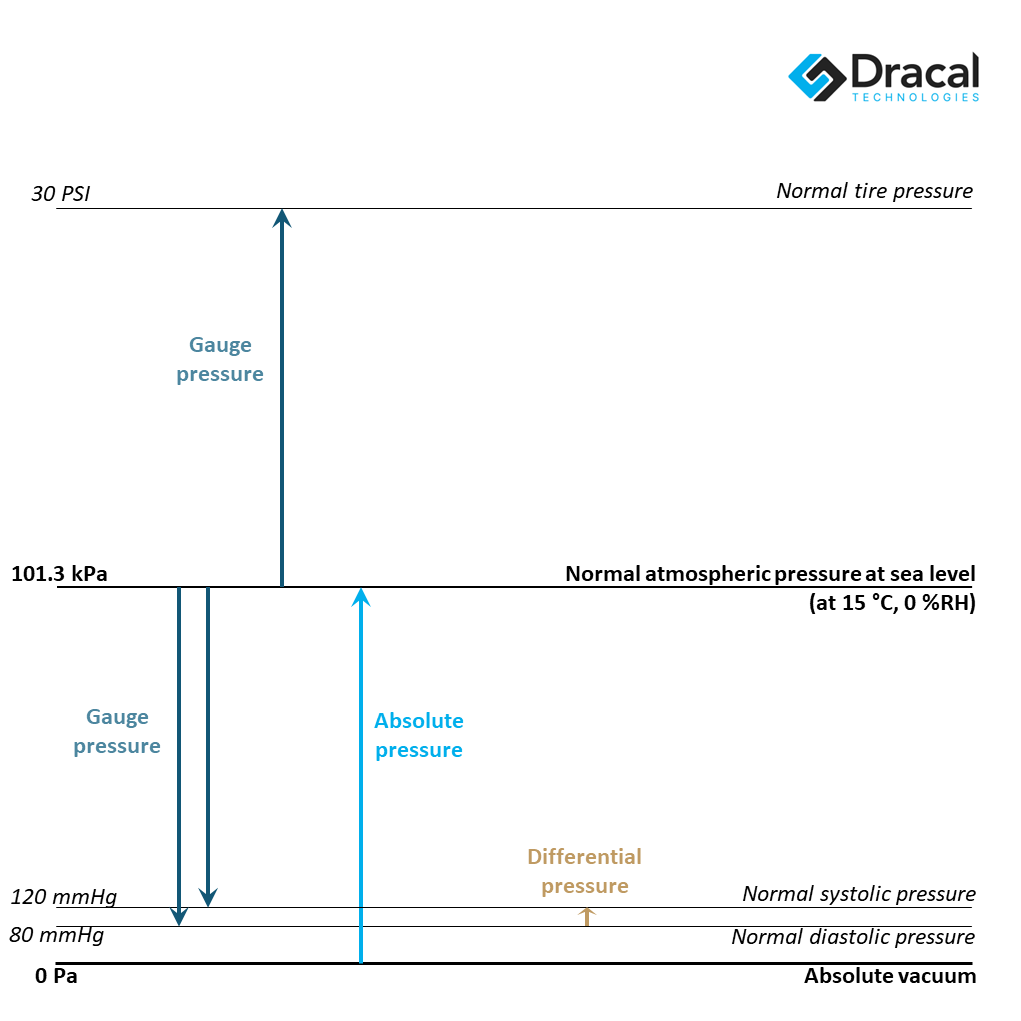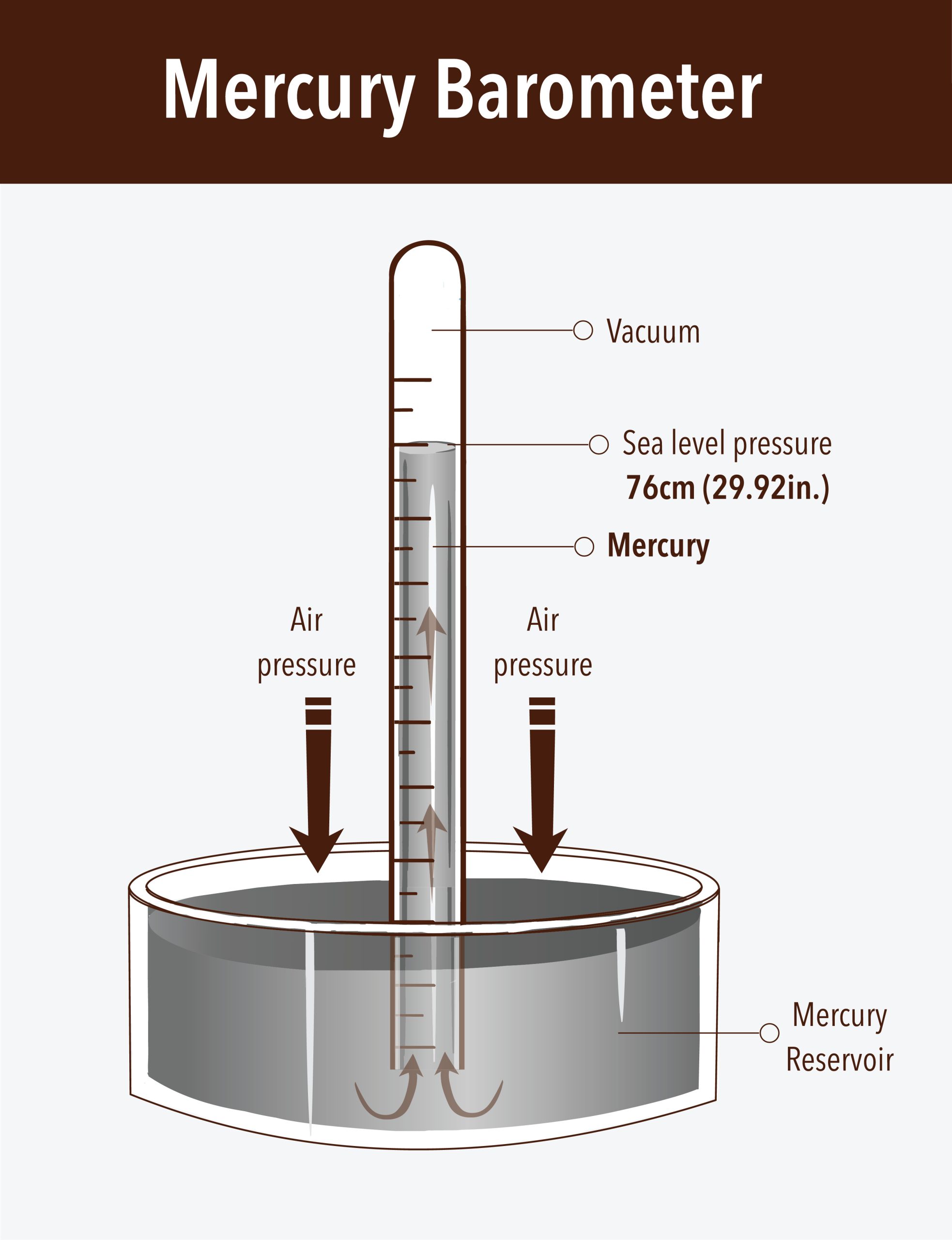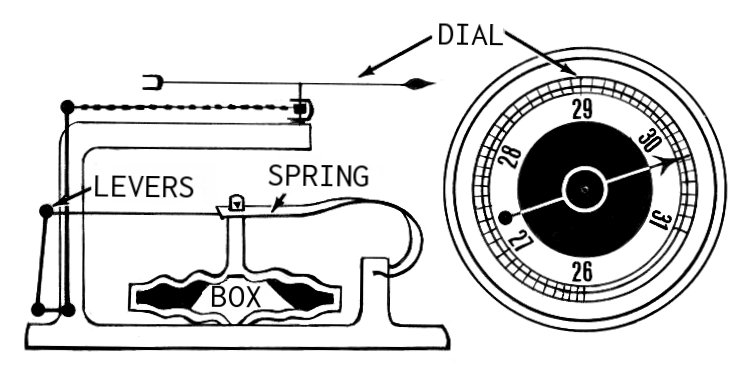How to measure atmospheric pressure?

In order to understand what atmospheric pressure is, we will see the types of pressure measured by pressure sensors. Then we will focus on barometers, which are the specific pressure sensors for atmospheric pressure.
Pressure sensors
In the International System, pressure is measured in Pascal (Pa). The definition of a Pascal is an amount of force (in Newton) per unit area (in square meters). All pressure sensors measure pressure relative to a reference. This reference is what distinguishes the type of pressure measured by the sensor.
In an absolute pressure sensor, there is a component that is at zero pressure (0 Pa), created by a complete vacuum of air. This vacuum component serves as a reference for the sensing element of this sensor. This is the type of pressure sensor we will be most interested in in this article since the measurement of atmospheric pressure is that of absolute pressure. In the illustration below, the example of absolute pressure is the measurement of atmospheric pressure.
A gauge pressure sensor uses atmospheric pressure as a reference. Rather than having an absolute vacuum component, there is an air inlet in the sensor to give the current atmospheric pressure as a reference. A sphygmomanometer, the blood pressure device in the doctor's office, is one of these types of sensors. In the illustration below, the normal pressure of 120/80 is shown. The tire pressure gauge for a vehicle is also a gauge pressure sensor. The normal tire pressure of a car is also shown below.
A differential pressure sensor measures the difference in pressure between 2 points, with two variable inputs. There is no fixed reference as in the case of absolute or gauge pressure sensors. It is used, for example, to measure the pressure in negative pressure chambers, to ensure that the airflow is out. This kind of chamber has a pressure differential of -30 Pa. Since it was impossible to represent such a small pressure difference in the illustration below, we have instead shown what a calculated differential pressure is.

Overview of different types of barometers
There are units of pressure other than Pascal in common parlance, for example, mmHg (millimeters of mercury) or inHg (inches of mercury). This is because early barometers consisted of an empty column inverted on a mercury reservoir, and the height at which the mercury rose in the column was correlated to the air pressure. Here we see that the air pressure at sea level is 760 mmHg (76 cmHg or 29.92 inHg).

Image credits: Adobe Stock
Next, the aneroid barometer appears, where an arrow indicates the atmospheric pressure. The metal box reacts to the change in air pressure and moves the levers which are connected to a chain, which in turn turns the needle. The numbers on the dial below are in inHg. Some aneroid barometer dials even indicate whether the weather will be stormy, rainy, variable, fair or dry, rather than air pressure.

This type of barometer was used in barographs, to keep track of the atmospheric pressure from day to day in weather stations.
Nowadays, the usual barometers are mostly digital. More accurate, smaller, and where electronics have a prominent role.
Without going into the details of the electrical circuits involved, a digital air pressure sensor typically consists of a pressure transducer and a voltmeter, on a chip.
To learn more about digital barometers or to find out what a USB barometer can do, click on the relevant links.
However, it should be noted that despite the high accuracy capability of electronic barometers, NRC's primary standard remains a mercury barometer.
References
Atmospheric pressure | Definition & Variation | Britannica. (2023). In: Encyclopædia Britannica. [online] Available at: https://www.britannica.com/science/atmospheric-pressure#ref128229 [Accessed 8 Feb. 2023].
Barometer | Definition, Types, Units, & Facts | Britannica. (2023). In: Encyclopædia Britannica. [online] Available at: https://www.britannica.com/technology/barometer [Accessed 8 Feb. 2023].
Desquerre, I., Brouqui, P. and Boudjema, S. (2021). Chambres à pression négative et gestion du risque épidémique. Médecine de Catastrophe - Urgences Collectives, [online] 5(2), pp.137–142. doi:https://doi.org/10.1016/j.pxur.2021.04.003.